法國法郎
出自 MBA智库百科(https://wiki.mbalib.com/)
法國法郎(French Franc,原符號:F.F.;Fr.Fc.; F.FR.,標準符號:FRF)
目錄 |
法郎的誕生有一段歷史掌故。1356年,正值英法“百年戰爭”正酣之際,法蘭西國王讓二世在法國西部的普瓦提埃一役中失利,被英軍俘獲,淪為階下囚。英方提出了釋放他的苛刻條件:交納300萬金路易,否則決不放人。讓二世在倫敦被囚禁了4年之後,最終如數交納了這筆巨額贖金,才得以返回法國。1360年12月5日,獲釋後的讓二世國王簽署一道敕令,決定鑄造含純金3.87克的硬幣來紀念這一歷史事件。硬幣的正面是讓二世在戰馬上身披鎧甲、手執利劍的英武形象,意為國王獲得自由,返回法國。根據國王的旨意,這種新錢幣就以“自由”命名。“自由”一詞的法文是Franc,音譯為中文便是“法郎”。如果從1360年“法郎”金幣的鑄造算起,法郎作為貨幣至今已經有整整638年的歷史,堪稱世界上最古老的貨幣之一。
法郎雖然歷史悠久,但它走過的道路卻坎坷不平。
讓二世創立了法郎,但卻未能從此樹立它作為官方貨幣的地位。15世紀中葉,查理七世廢除了法郎,恢復了原來的貨幣———金路易。文藝復興時期,金路易又被“代斯頓”所代替。“代斯頓”這個貨幣名稱來自義大利,原意為“腦袋”。法王路易十二在義大利戰爭期間對義大利貨幣上刻有歷屆國王頭像這一點十分欣賞,他回國後,便下令把自己的頭像也鑄造在法國的貨幣上,“代斯頓”因而得名。
1789年,法國大革命爆發,法郎在沉寂了300餘年後得以重新露面。法國大革命後推行公制,1795年,法郎開始作為標準貨幣在法國流通,取代原有的里弗爾。1法郎等於100生丁(centimes),含5克成色90%的白銀。此外還鑄造了含6.45克黃金、價值20法郎的拿破侖金幣。1803年,拿破侖頒佈法令,確立了法郎的國家貨幣地位。從此,法郎就一直是法國幣制的基本單位。隨著法國經濟實力的增強,法郎成為當時歐洲最堅挺的貨幣,並且形成了一個以法國為中心、包括義大利、瑞士和比利時的法郎區。拿破侖三世甚至在1867年提出過建立以法郎為參照的世界貨幣聯盟的構想。
法郎最初為金銀複本位貨幣。1865年在法國的倡導下,法國、義大利、瑞士和比利時在巴黎召開會議,宣佈組建拉丁貨幣同盟(希臘、西班牙、羅馬尼亞、委內瑞拉等國後來加入),實施基於法國體系的金銀複本位貨幣制度。其成員國承諾只鑄造100法郎、50法郎、20法郎、10法郎和5法郎的金幣,以及5、2、1法郎和50、20生丁的銀幣。美國在南北戰爭之後發行的5美元鷹徽金幣和英國的沙弗林金幣(Sovereign,合30先令或1.5英鎊)價值均接近25法郎,因此兩國提出以法國發行25法郎金幣的方式同拉丁貨幣同盟建立聯繫,但這一建議被擔心貨幣重鑄成本的法國拒絕。
由於金銀比價在19世紀後期不斷跳動,導致金銀複本位制度的崩潰。在法國,金銀比價從1807年至1870年的1:15變為1874年的1:16.17,黃金大量流出,法國不得不於1876年實行金本位制度,廢止5法郎銀幣的流通,並規定法郎含金量為0.2903225克。
第一次世界大戰後,法國採取紙幣通貨膨脹的政策,法郎發生貶值,到1922年時,其購買力已跌至1915年的43%,同英鎊的比價從1914年的25.22:1跌到1926年的240.2:1。法國不得不終止金本位的實行。1928年法國制訂新貨幣法,規定法郎含金量為0.065克,僅相當於一戰前的1/5。
第一次世界大戰期間,法郎幣值與黃金脫鉤。此時美國國力日強,美元蒸蒸日上,法郎失去了曾經的輝煌。
第二次世界大戰後,法國再度發生惡性通貨膨脹,同英鎊比價跌至接近1:1000。1960年發行新法郎(Nouveau Franc),確定其幣值為舊法郎的100倍,相當於0.1802克黃金。
1958年,戴高樂總統當政後,決定推出價值為舊法郎100倍的新法郎,取代不斷貶值的舊法郎。此舉保住了法國貨幣的地位。然而,到了二十世紀80年代,法郎再次發生危機,美元與法郎的比價一度跌至1:10。法郎的跌宕起伏使法國人明白了一個道理:光靠法國自身努力是難以抗衡美元的,歐洲必須聯合起來才能真正強大,也才能擁有穩定的貨幣。
停止流通期限
停止流通期限:2002.02.17 ,商業銀行停止收兌期限:2002.06.30 , 中央銀行停止收兌期限:紙幣10年,輔幣3年
2002年1月1日歐元發行之後,法郎已逐漸的停止流通,法國的國家銀行,法蘭西銀行在2002年已停止兌換某些法郎舊鈔,而2005年後,舊鈔中的高乃依(Corneille)系列﹙有5法郎、100法郎﹚或10法郎白遼士(Berlioz)系列的鈔票也不能再換歐元。屆時在法國流通的法郎將只剩下幾種﹙可用到2012年2月17日﹚,分別是:
- 500法郎“皮埃爾和瑪麗·居裡”(Pierre et Marie Curie,1995年3月發行),
- 200法郎的“居斯塔夫·艾菲爾”(Gustave Eiffel,1996年10月發行)
- 100法郎的“塞尚”(Paul Cezanne,1997年12月發行),
- 50法郎的“聖·埃克蘇佩里”(Saint-Exupery,1993年10月發行)
- 20法郎的“德彪西” (Debussy,1981年10月發行)。
下列舊鈔則可用到2009年
- 500法郎的“帕斯卡爾”(Pascal,1969年1月發行),
- 200法郎的“孟德斯鳩” (Montesquieu,1982年7月發行),
- 100法郎的“德拉克羅瓦”(Delacroix,1979年8月發行)
- 50法郎的“康坦·德·拉圖爾” (Quentin de La Tour,1977年4月發行)
除了在法國使用,法國法郎也曾是摩納哥和安道爾的流通貨幣。現在,這兩個國家也都已轉用歐元。
1、紙張
法國法郎的紙張極薄、只有普通紙張的二分之一。紙張呈布紋狀,纖維長,密度高,挺括度好、不易斷裂、經長時間使用不起毛,不鬆軟。
2、對印
它不象其它鈔票那樣,在鈔票的某一部分單獨印有對印圖案。法國法郎的人像是兩面一次對印,正、背面人像相同,透視完全重合。另外,鈔票的外眶、水印窗及部分面額數字都成對印。對印技術是鈔票防假的重要手段之一,無疑法郎的這種對印方法,對鈔票防假是非常有效的。
3、主要圖案的印刷
法國法郎鈔票的主要圖案是以彩色套印成圖案後,再通過黑色凹印,突出了圖案的主題、使圖案色彩豐富、清晰、更富有立體感,有油畫的效果。
4、序號
法國法郎有三組數字,一組是連號、通常是由九位或十位阿拉伯數字組成,在鈔票正面的中上方。另一級是校對號,由五位或六位數字組成,它與連號的後幾位相同。還有一組是檢查號碼,它是由一個字母和兩個或三個阿拉伯數字組成。
1993年以後法蘭西銀行先後發行了50法郎、200法郎及500法郎新版鈔票。新版鈔票改變以以往的印刷風格、紙張不如原來薄、增加了開窗式安全線。人像也不再是正背對印、面改為各種圖案的互補對印,官員簽字改在鈔票的背面。取消了原來的校對號對號碼,連號改為正背面各一組。
1FRF=100centimes(生丁,分)
輔幣單位是生丁(centime)。
輔幣進位: 1法郎=100生丁(CENTIMES)
流通的紙幣面額有20、50、100、200、500法郎;
硬幣面額有5、10、20生丁和1/2、1、2、5、10法郎。
法國法郎2002年2月17日正式退出歷史舞臺,2002年7月1日,法國法郎完成其歷史使命,退出流通領域。
當地時間2002年2月18日凌晨,法國法郎在進入午夜之後正式停止流通,從此法國人告別了流通了約600年的法國貨幣———法郎。而對法國政界人士來說,朝野都在爭著將這一次貨幣轉換成功的功勞占為已有,因為離大選已經不遠了。
在法國成為第3個以歐元作為其唯一貨幣的歐洲國家後,法國財政部進行了低調的紀念法郎結束的儀式。歐元區的12個國家在2002年1月1日都開始使用歐元。其中荷蘭和愛爾蘭先於法國停止使用各自國家的傳統貨幣。其餘9國在2002年2月28日停止使用各自的傳統貨幣。
The History of the French franc
One of Europe's oldest currencies, the french franc was first minted in 1360 to pay a King's ransom for the release of King John the Good. It reappeared in a variety of manifestations over the course of French history, often in times of trouble. The currencies name comes from the inscription reading Johannes Dei Gratia Francorum Rex ("Jean by the grace of God King of the French") and its value was set as one livre tournois (a money of account). Francs were later minted under Charles V, Henri III and Henri IV. Louis XIII of France stopped minting the franc in 1641 (replacing it with the Écu and Louis d'Or), but use of the name "franc" continued in accounting as a synonym for the livre tournois.
During the French Revolution the franc was established as the national currency by the French Revolutionary Convention in 1795 as a decimal unit (1 franc = 100 centimes). The value of the franc was set at 4.5 grams of fine silver. This was slightly less than the livre tournois which was valued at 4.505 grams of silver, but in 1796 the franc's value was set at 1.0125 livres or (1 livre, 3 deniers), reflecting in part the past minting of sub-standard coins.
In 1803, the "franc germinal" (named after the name of the month in the revolutionary calendar) was established, creating a gold franc containing 9/31 g (290.32 mg) of fine gold. From this point, gold and silver-based units circulated interchangeably on the basis of a 1:15.5 ratio between the values of the two metals (bimetallism). This system continued until 1864, when all silver coins except the 5 franc piece were debased from 90% to 83.5% silver without the weights changing.
1865 saw the formation of the Latin Monetary Union of which France was a founding member. The Latin Monetary Union was an attempt to unify several currencies into a single currency that could be used in all member countries. The Union was formed at a time when most currencies were still made out of gold and silver. The Union was originaly made up of four countries: France, Switzerland, Belgium and Italy. The common currency was based on the French franc germinal, with the name franc already being used in Switzerland and Belgium, whilst other countries continued to use their own names for the currency. Thus 5 Italian lire was equal to 5 french francs. The Union was later joined by Spain and Greece in 1868, and Romania, Austria, Bulgaria, Venezuela, Serbia, Montenegro, San Marino and the Papal States in 1889. In 1873, the Monetary Union went over to a purely gold standard of 1 franc equal 9/31 grams of gold.
With outbreak of World War I caused France to leave the gold standard of the Latin Monetary Union. The war severely undermined the franc's strength, as war expenditure, inflation and postwar reconstruction, financed partly through the printing of ever more money, reduced the franc's purchasing power by 70% from 1915 to 1920 and a further 43% from 1922 to 1926. France returned to the gold standard from 1928 - 1936, France left the gold standard in 1936 and the value of the French franc continued to slide.
During the German occupation of France, the franc was a satellite currency of the German Reichsmark. The coins were changed, with the words "travail, famille, patrie" (work, family, fatherland) replacing the Republican triad "Liberté, Égalité, Fraternité" (Freedom, Equality, Brotherhood) and the symbol of the Vichy regime added.
After the close of World War II the value of the French franc continued to slide further, until in 1959 the value of the French franc was less then 1/40 of its 1935 value.
The New Franc In January 1960 the French franc was revalued at 100 existing francs. Old franc pieces continued to circulate as centimes (none of which were minted for the first two years), 100 of them making a nouveau franc (the abbreviation NF was used on banknotes for some time). Inflation continued to erode the currency's value but at a greatly reduced rate comparable to other countries so when the value of the franc was pegged to that of the euro in January 1, 1999, the new franc was worth less than an eighth of its original value.
Interestingly, after revaluation and the introduction of the new franc, many French people continued using old francs (anciens francs), to describe large sums. For example, lottery prizes were often advertised in amounts of centimes, equivalent to the old franc. This usage continued right up to when franc notes and coins were withdrawn in 2002.
From January 1, 1999, the value exchange rate of the French franc against the euro was set at a fixed parity of 1 EUR=6.55957 FRF. Euro coins and notes replaced it entirely between January 1 and February 17, 2002. Prior to the introduction of the euro banknotes and coins, French banknotes circulated in denominations of 20, 50, 100, 200 and 500 francs. Coins were issued in denominations of 5, 10, 20 and 50 centimes, 1, 2, 5, 10 and 20 francs. The ISO 4217 code for the currency was FRF.
Usage of the French Franc around the Globe Just Prior to the introduction of the euro, French Banknotes and coins were used in the independent countries of Andorra and Monaco and in the French possessions of French Guiana, Guadeloupe, Martinique, Mayotte, Reunion and St. Pierre et Miquelon.
Several now independent former French colonies use currencies with their exchange rate tied to the value of the French Franc. See related currencies at the bottom of this page for a complete list.
Historical Exchange Rates The table below gives the average yearly exchange rates of the franc from 1948 until the euro's introduction in 2002. The rates show are the number of French francs per U.S. Dollar and per British pound.
Year US Dollar (USD) Br. Pound (GBP) Year US Dollar (USD) Br. Pound (GBP) 1948* 308.81 1244.50 1976 4.8029 8.630 1949* 331.96 1235.70 1977 4.9052 8.556 1950* 349.68 979.10 1978 4.5131 8.654 1951* 349.96 979.90 1979 4.2544 9.010 1952* 349.97 979.90 1980 4.2256 9.820 1953* 349.96 979.90 1981 5.4346 10.921 1954* 349.97 979.90 1982 6.5721 11.481 1955* 349.97 979.90 1983 7.6213 11.552 1956* 349.79 979.40 1984 8.7381 11.624 1957* 361.64 1012.60 1985 8.9852 11.531 1958* 419.74 1175.30 1986 6.9261 10.143 1959* 493.71 1382.40 1987 6.0107 9.823 1960 4.9371 13.824 1988 5.9569 10.596 1961 4.9371 13.824 1989 6.3801 10.439 1962 4.9371 13.824 1990 5.4453 9.669 1963 4.9371 13.824 1991 5.6421 9.951 1964 4.9371 13.824 1992 5.2938 9.291 1965 4.9371 13.824 1993 5.6632 8.494 1966 4.9371 13.824 1994 5.5520 8.497 1967 4.9371 13.824 1995 4.9915 7.877 1968 4.9371 11.849 1996 5.1155 7.981 1969 5.1942 12.466 1997 5.8367 9.555 1970 5.5542 13.330 1998 5.8995 9.770 1971 5.5406 13.483 1999 6.1579 9.963 1972 5.0445 12.599 2000 7.1343 10.794 1973 4.4528 10.909 2001 7.3324 10.555 1974 4.8096 11.244 2002 6.9815 10.464 1975 4.2878 9.4850
* Rates from 1948 - 1959 are shown in old francs.
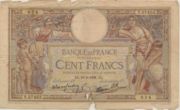
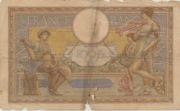
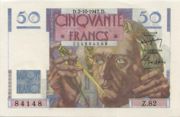
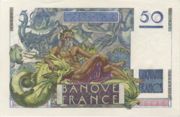
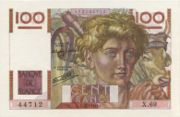
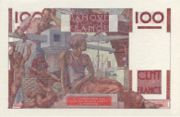
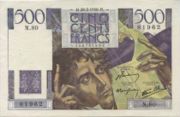
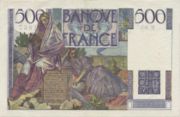


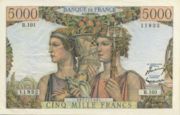
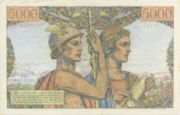






































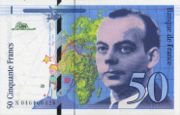
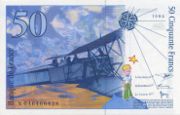
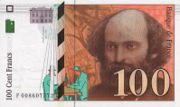
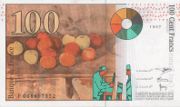




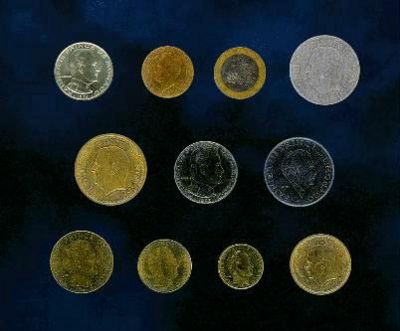








為什麼沒有金幣的圖片遺憾